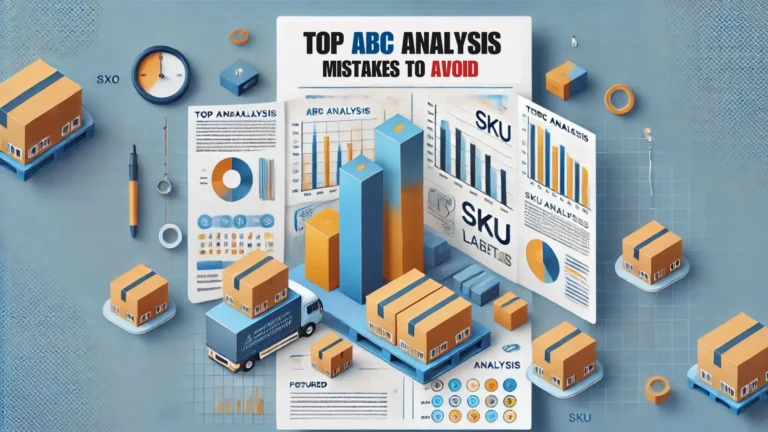Excess inventory is a common issue that many businesses face. It can tie up valuable capital, increase storage costs, and potentially lead to losses if products become obsolete. But with a clear strategy for prioritizing which items to clear first, you can turn this challenge into an opportunity to optimize your resources and improve cash flow.

This guide will walk you through a step-by-step approach to determining which excess inventory items to prioritize for clearance, using proven strategies and actionable insights.
Why Prioritizing Excess Inventory Matters
Excess inventory may seem like a minor inconvenience, but it can have a significant impact on your business. If not addressed, it can:
- Tie up working capital that could be invested elsewhere.
- Increase holding costs, particularly for bulky or perishable items.
- Risk obsolescence, especially in fast-moving industries like technology or fashion.
Prioritizing inventory for clearance allows you to free up space, reduce costs, and maintain operational efficiency. A smart clearance strategy helps avoid deep markdowns and ensures you recover as much value as possible from excess stock.
Key Factors for Prioritizing Excess Inventory
To make informed decisions about which inventory to clear first, consider the following key factors:
1. Inventory Age
Older items should generally be cleared out first. Products that have been in your warehouse for an extended period may become outdated or obsolete, especially if they are seasonal or trend-based. Implementing systems like FIFO (First In, First Out) or FEFO (First Expiry, First Out) helps ensure that older stock moves before newer items.
Action Tip: Use your warehouse management system (WMS) to tag and categorize items by their age. Regularly review these reports to prioritize clearance of aging inventory.
2. Sales Velocity
Items with low sales velocity are those that move slowly through your inventory. If a product is sitting on your shelves for too long, it is tying up space and cash that could be better used for faster-moving items.
Action Tip: Conduct an ABC analysis, which categorizes products based on their importance to your business:
- A Items: High-value, fast-moving products.
- B Items: Moderate-value, medium-moving products.
- C Items: Low-value, slow-moving products.
Focus your clearance efforts on Category C items that are slow to sell.
3. Carrying Costs
Certain items are more expensive to store than others due to their size, special handling requirements, or perishability. High carrying costs can eat into your profit margins, making it essential to clear these items quickly.
Action Tip: Prioritize bulky or special-care items that require high storage costs. This will not only reduce expenses but also free up valuable warehouse space.
4. Product Lifecycle and Obsolescence Risk
Some products have a short lifecycle, such as electronics or fashion items, which means they quickly become obsolete. Clearing items before they reach the end of their lifecycle helps avoid losses from outdated stock.
Action Tip: Use dynamic pricing or bundling strategies to move items nearing the end of their lifecycle. Offering discounts on older models or bundling them with popular products can help clear stock faster.
5. Demand Trends and Seasonality
Products that are seasonal or linked to trends should be cleared before their demand drops. For example, winter clothing should be cleared well before summer begins.
Action Tip: Use historical sales data to analyze demand trends and forecast the best times to clear seasonal products. If a product’s demand has dropped significantly, it’s time to move it.
6. Profit Margins
While it’s important to clear slow-moving, low-margin items quickly, high-margin products might still be worth holding onto if there’s a chance of future demand. Balancing profitability with clearance priorities ensures you don’t lose money on potentially valuable stock.
Action Tip: Segment your inventory by profit margins. Prioritize low-margin items for clearance, while strategically managing high-margin products.

7. Supplier Agreements and Returnability
For non-performing items, consider whether they can be returned to suppliers or exchanged for more in-demand stock. This can help free up space and recover some value without resorting to steep discounts.
Action Tip: Negotiate return agreements with suppliers, especially for high-value or bulk purchase items that may be difficult to clear through regular sales channels.
Effective Clearance Strategies
Once you’ve identified the items to prioritize, the next step is to develop a clearance strategy. Here are some options:
1. Discounted Sales
Offer limited-time discounts or promotions to create urgency and attract buyers. Flash sales and bulk discounts can help move inventory quickly.
2. Bundling
Pair slow-moving products with fast-selling ones to create value bundles. This is especially effective for low-margin or complementary products.
3. Online Marketplaces
List excess inventory on secondary marketplaces such as Amazon, eBay, or niche platforms to reach a broader audience without heavily discounting your products.
4. Vendor Returns or Liquidation
If possible, return unsold inventory to suppliers or sell it to liquidation companies. While this may result in lower profits, it allows you to recover some capital quickly.
5. Donations
For unsellable items, consider donating them to charity. This not only clears inventory but can also provide tax benefits and enhance your company’s corporate social responsibility efforts.
Preventing Future Overstock
While clearing excess inventory is important, preventing it in the first place will save you time and money. Here’s how you can reduce the risk of overstocking:
1. Improve Demand Forecasting
Use data analytics to refine your demand forecasting models. This allows you to better align stock levels with actual demand, reducing the likelihood of excess inventory.
2. Implement Just-In-Time (JIT) Inventory
The JIT method ensures that inventory is only ordered as needed, minimizing the risk of overstocking.
3. Conduct Regular Audits
Regular inventory audits help you identify slow-moving items early and take corrective action before they become excess stock.
4. Align Procurement with Sales Data
Ensure that your procurement team is aligned with real-time sales data, so purchasing decisions reflect current demand trends rather than outdated forecasts.
Conclusion
Prioritizing excess inventory for clearance is not just about getting rid of products but doing so in a way that maximizes your resources and minimizes losses. By focusing on key factors like inventory age, sales velocity, carrying costs, and demand trends, you can create an effective clearance strategy that frees up space, recovers working capital, and optimizes your operations.
Combining proactive clearance strategies with better demand forecasting and lean inventory practices will help prevent future overstock situations, ensuring that your business remains agile, efficient, and profitable.






